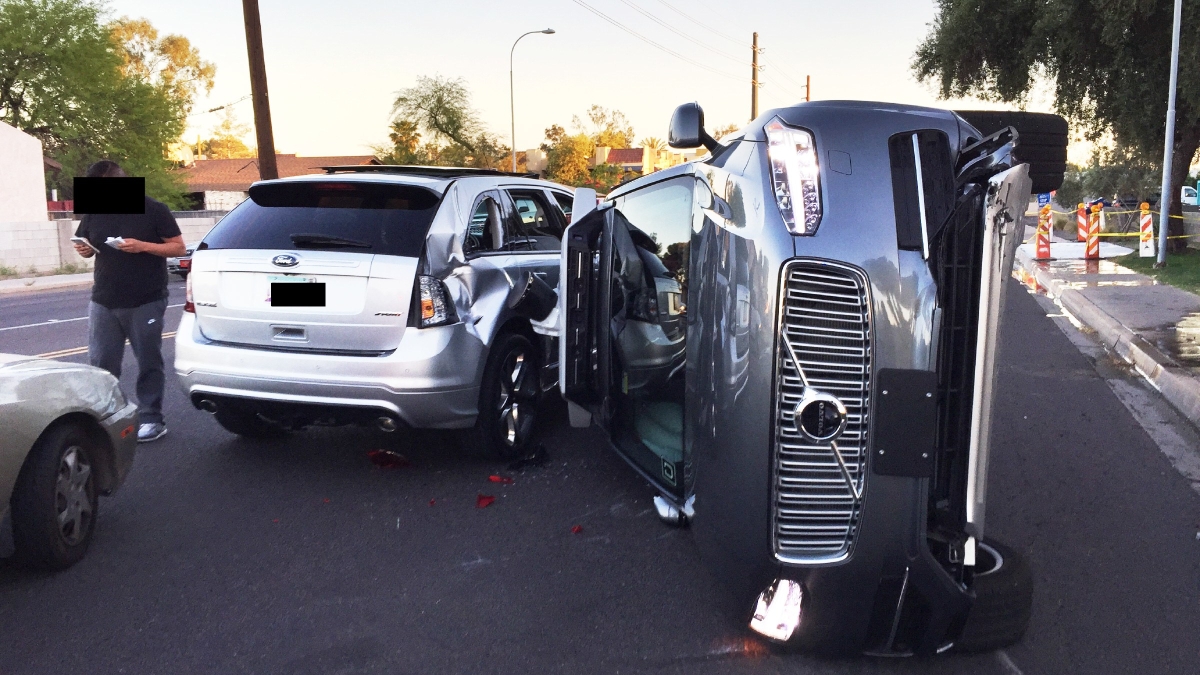A different standard for self-driving car safety
Experts in computer science, sustainability, urban planning discuss future of autonomous vehicles at ASU panel

Tragic history was made recently in Tempe when a self-driving car hit and killed a human being for the first time.
One person is killed per 100 million miles driven in the United States.
“With regard for autonomous vehicles, we are at one death for ten million miles,” said Clark Miller, professor in the School for the Future of Innovation in Society and moderator of an Arizona State University panel discussion Friday. The panel, "The Future of Autonomous Vehicles," addressed the accident and its implications.
Who was at fault in the fatal accident? Everyone.
Initial reports said that the pedestrian stepped out into the road.
But an internal camera shows “it’s pretty clear the driver was not looking at the road at the time,” said Thad Miller, a professor in the School for the Future of Innovation in Society. And the car — bristling with sensors, lasers, cameras and radar — made “zero attempt to stop or swerve” in dash cam video, Miller added.
“It’s still not clear where blame will be placed,” Miller concluded.
More: Autonomous vehicles driving the wrong road to safety, ASU engineer says
Self-driving cars are going to be held to a different safety standard than human drivers.
“The lead question is: safety for whom?” asked David King, an assistant professor in the School of Geographical Sciences and Urban Planning. “The biggest danger we have is we overreact to the pedestrian risk. … If autonomous vehicles hit and kill as many people as human drivers, that’s going to be seen as unacceptable."
The question of continued testing in the Phoenix area is still up in the air.
“Small mistakes can have a huge effect on society,” said Lina Karam, a professor and computer engineering chair in the School of Electrical, Computer, and Energy Engineering.
As the technology develops, it will continue to share the road with human-chauffeured cars. “At least for a while our streets will be mixed-use,” Clark Miller said.
“It’s very unlikely human driving is going to go away any time soon,” King added.
When it comes to robotic cars or autonomous vehicles, we're faced with more questions than answers.
Among those questions is the lack of a basic safety standard, such as being able to identify an object in the road 30 yards ahead while moving at 30 miles per hour. Do we prioritize people or vehicles?
What will happen to public transit? What will happen to parking structures? Will driverless cars lead to the renewal of urban sprawl?
“These are things cities need to think about now and not 15 years down the road,” Thad Miller said.
This event was co-hosted by the School for the Future of Innovation in Society and the Julie Ann Wrigley Global Institute of Sustainability.
Top photo: Scene from an accident in Tempe in 2017. The car on its side is an Uber self-driving car. Photo courtesy Tempe Police Department
More Science and technology

Associate professor shares her journey from NASA to ASU
From leading space missions to designing and building spaceflight hardware and training students in space science and engineering, Arizona State University is proving that space is more than a…

Famed systems engineer inspires ASU to tackle global problems
“Providing great talent with great opportunity can make a great difference.” Such was a key part of the message delivered by G. Don Taylor, executive vice provost and the Charles O. Gordon Professor…

The science behind chronic stress
Stress comes in many shapes and sizes. There’s the everyday stress of preparing for a final exam or being stuck in traffic. And the more significant stress of losing a friend, family member,…